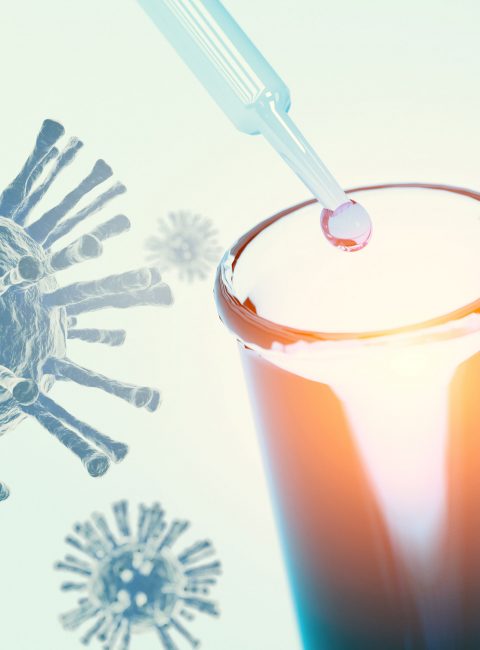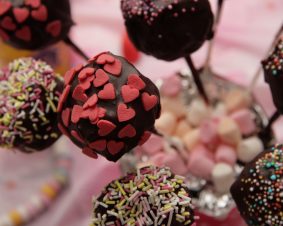 >
Spotlight March 2021: Is Nanotechnology the Swiss Army Knife against Future Pandemics?
>
Spotlight March 2021: Is Nanotechnology the Swiss Army Knife against Future Pandemics?
The COVID 19 outbreak has led to a fundamental rethinking of existing approaches to diagnosis, treatment, and prevention methods. The need for better and more efficient concepts is global and urgent. Nanotechnology has long been at the forefront of innovation and has led to advances in many different disciplines. Could this interdisciplinary field help develop a more comprehensive approach to combating COVID-19 as well as future pandemics?
This review published in the journal ACS NANO provides a general introduction to the novel coronavirus (SARS-CoV-2), the progression of the coronavirus disease 2019 (COVID-19) along with an overview of current vaccines. Additionally, some of the attempts to stop the first interaction of the virus with the target cells as well as preventing life-threatening processes are illustrated in detail. In this context, the interdisciplinary authors present and discuss several potential advantages of nanotechnology and the critical role it could have in the fight against COVID-19 and future pandemics both inside and outside the host. The authors highlight the multifunctional solutions offered by materials in the nanoscale e.g., by combining diagnostic and therapeutic into one. These nanotechnology-based-systems can increase the specificity and therefore the efficiency of immunosuppressant delivery to targeted cells resulting in a reduction of drug dose and drug distribution to nontarget organs. The authors also explain in detail the multiple ways, nanomaterials can assist vaccines or immunization research for example by boosting the upregulation required by the immune system or redirecting the immune response against antigens. Nanotechnology may similarly offer pathways to slow the spread of COVID-19; in this review, the development of self-disinfecting surfaces that would avoid contamination at hospitals or homes is also presented. Finally, to highlight the multifunctionality of nanomaterials, the authors examine how nanotechnology-based solutions could increase the safety of air-filtering devices such as masks.
Those interested in a more detailed description of emerging nanoscale materials or examples can read them in the original publication:
Weiss, C., Carriere, M., Fusco, L., Capua, I., Regla-Nava, J.A., Pasquali, M., Scott, J.A., Vitale, F., Unal, M.A., Mattevi, C. and Bedognetti, D., 2020. Toward nanotechnology-enabled approaches against the COVID-19 pandemic. ACS nano, 14(6), pp.6383-6406. DOI: 10.1021/acsnano.0c03697

Weitere Spotlights
Spotlight September 2020: Groundwater remediation with Carbo-Iron® – Risk or Benefit?
In September we would like to present a paper of the BMBF project Fe-Nanosit. The project dealt with the use of iron-containing nanomaterials in groundwater and wastewater remediation. A comprehensive assessment and weighing of benefits and possible environmental risks resulting from the application is now presented by the project partners in this paper. Groundwater is indispensable for the […]
Read moreSpotlight November 2021: Safe Materials from Scratch – Safe-by-Design in Materials Research
Advances in the field of materials science continue to amaze us with nanoscale materials with extraordinary chemical, electrical, optical, and numerous other properties. However, some nanoscale materials have different toxicological profiles compared to the same bulk material. Since safety issues are usually addressed just before launching a product into the market, safety issues may be […]
Read moreSpotlight May 2022: Nano-ghosts” – Risk assessment of submicron-sized particles in food biased towards fictional “nano”
The European Commission has issued a ban on the colorant titanium dioxide in food. Titanium dioxide, which provides a nice shine and bright white color, can potentially damage genetic material. We chose a review article from 2022 for the May 2022 Spotlight that addresses the risk assessment of food-grade titanium dioxide (E171) and the resulting […]
Read moreSpotlight August 2023: From principles to reality. FAIR implementation in the nanosafety community
In the August 2023 Spotlight, we present a paper that addresses the implementation of FAIR (Findability, Accessibility, Interoperability and Reusability) Data in nanosafety research. The authors introduce the new AdvancedNano GO FAIR Implementation Network (see also https://www.go-fair.org/implementation-networks/overview/advancednano/) established as part of the GO FAIR initiative. The paper highlights the AdvancedNano GO FAIR Implementation Network’s support […]
Read more

